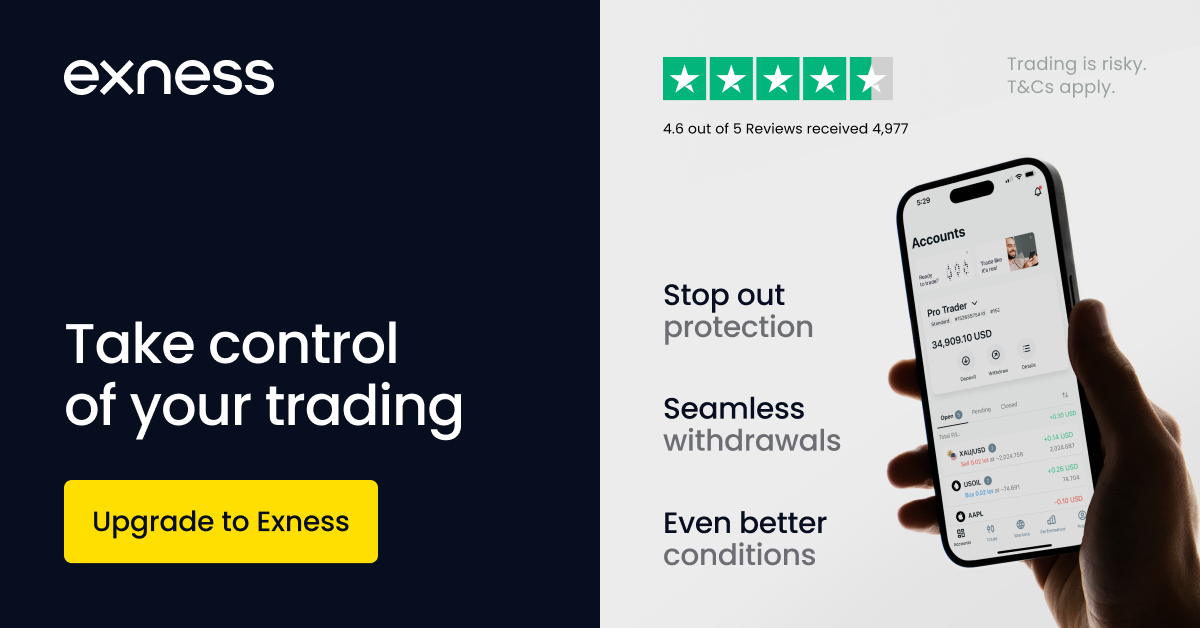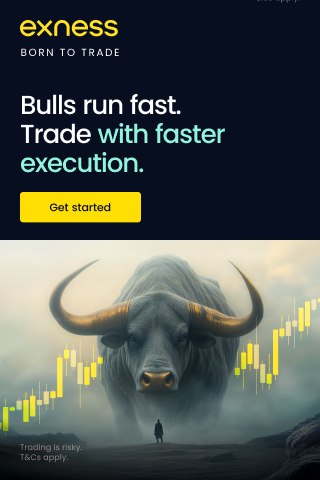
6 minute read
Best EXNESS Trading Strategies For Beginners 2025
When you’re just starting with Exness, it’s essential to adopt strategies that are simple, easy to understand, and provide a solid foundation for your trading journey. Here are some of the best Exness strategies for beginners to help you get started:
The Trend Following Strategy
The Moving Average Cross Strategy
The Breakout Strategy
The Range Trading Strategy
The Fibonacci Retracement Strategy
The MACD Strategy
Start Exness Trade: Open Exness Account and Visit site

1. The Trend Following Strategy
The trend-following strategy is one of the most straightforward strategies, especially useful for beginners. It involves identifying the current market trend (uptrend, downtrend, or sideways) and trading in the direction of that trend.
See more: how to create an account with exness
How it works:
Identify the Trend: Use tools like moving averages (e.g., 50-period and 200-period moving averages) to identify whether the market is in an uptrend or downtrend. If the price is above the moving average, it's typically a bullish trend; if it's below, it's bearish.
Trade with the Trend: In an uptrend, buy when the price pulls back to a support level. In a downtrend, sell when the price retraces to a resistance level.
Entry and Exit Points: Use support and resistance levels as entry points. Set a stop-loss just below a recent support level and take-profit levels at resistance points.
Pros:
Simple to understand and apply.
Works well in trending markets.
Cons:
May not work well in sideways (range-bound) markets.
2. The Moving Average Cross Strategy
The Moving Average Cross strategy is another beginner-friendly method, especially useful for identifying potential entry and exit points.
See more:
EXNESS social Trading best strategy 2025
Is Exness the Best Forex Broker in 2025?
How it works:
Use Two Moving Averages: A combination of a short-term moving average (e.g., 50-period) and a long-term moving average (e.g., 200-period) helps identify crossovers.
Buy Signal: When the short-term moving average crosses above the long-term moving average, it’s a bullish signal to buy.
Sell Signal: When the short-term moving average crosses below the long-term moving average, it’s a bearish signal to sell.
Confirm the Signal: Use other indicators like RSI or MACD for additional confirmation.
Pros:
Clear entry and exit signals.
Easy to implement for beginners.
Cons:
Might generate false signals during sideways markets.
3. The Breakout Strategy
The breakout strategy is based on identifying key support and resistance levels and placing trades when the price breaks out of these levels.
How it works:
Identify Support and Resistance Levels: Look for areas where the price has bounced or reversed several times. These are your key levels.
Wait for a Breakout: When the price breaks through a key resistance level (in an uptrend) or support level (in a downtrend), it signals a breakout.
Entry Point: Place your entry just above resistance for a buy (in an uptrend) or below support for a sell (in a downtrend).
Stop-Loss: Set your stop-loss just below the breakout point (for a buy) or above (for a sell) to minimize losses in case of false breakouts.
Take-Profit: Set a reasonable take-profit target based on the previous price action or a fixed risk-to-reward ratio.
Pros:
Works well during volatile market conditions.
Can yield high rewards if the breakout is strong.
Cons:
Breakouts can sometimes be false, leading to losses.
Start Exness Trade: Open Exness Account and Visit site

4. The Range Trading Strategy
Range trading is suitable for markets that are moving sideways, where price oscillates between support and resistance levels.
How it works:
Identify Support and Resistance: In a range-bound market, identify clear support and resistance levels where price keeps bouncing up and down.
Buy at Support: Enter a buy position when the price approaches the support level.
Sell at Resistance: Enter a sell position when the price reaches the resistance level.
Exit Strategy: Close positions as the price reaches the opposite end of the range (support or resistance).
Stop-Loss: Place your stop-loss slightly beyond the support or resistance level to avoid being stopped out by market noise.
Pros:
Simple to execute.
Effective in stable or consolidating markets.
Cons:
Not useful in trending markets.
Can lead to false breakouts or reversals.
5. The Fibonacci Retracement Strategy
The Fibonacci retracement strategy is a popular technique for identifying potential levels where a price pullback may occur before continuing in the original trend direction.
How it works:
Draw Fibonacci Levels: Identify the most recent significant swing high and swing low. Use these points to draw Fibonacci retracement levels (e.g., 38.2%, 50%, and 61.8%).
Wait for the Price to Retrace: The price may pull back to one of these key Fibonacci levels before continuing in the direction of the trend.
Entry Point: Enter a buy trade at a Fibonacci support level during an uptrend or a sell trade at a Fibonacci resistance level during a downtrend.
Stop-Loss and Take-Profit: Set your stop-loss just below (for buy trades) or above (for sell trades) the retracement level. Use the next Fibonacci level as your take-profit target.
Pros:
Helps pinpoint potential entry points.
Works well with trending markets.
Cons:
Requires experience to interpret correctly.
May not be effective in volatile or sideways markets.
6. The MACD Strategy
The Moving Average Convergence Divergence (MACD) is a momentum indicator that helps identify changes in market direction, trend strength, and potential entry and exit points.
How it works:
MACD Line and Signal Line: The MACD line is the difference between two moving averages (usually 12 and 26 periods). The signal line is a 9-period EMA of the MACD line.
Buy Signal: When the MACD line crosses above the signal line, it generates a bullish signal to buy.
Sell Signal: When the MACD line crosses below the signal line, it generates a bearish signal to sell.
Divergence: Look for MACD divergence, where the price is moving in the opposite direction of the MACD indicator, indicating a potential reversal.
Pros:
Can be used in trending and ranging markets.
Easy to use with clear buy and sell signals.
Cons:
May give late signals in fast-moving markets.
Start Exness Trade: Open Exness Account and Visit site
Tips for Beginner Traders Using Exness:
Start Small: Begin with smaller trade sizes and focus on understanding the market. Use a demo account if necessary to practice without risk.
Risk Management: Always set stop-loss orders to limit your potential losses. Use a risk-to-reward ratio of at least 1:2 to ensure that the potential reward outweighs the risk.
Stay Informed: Follow the latest news and trends, as the forex market can be heavily influenced by economic data, geopolitical events, and central bank policies.
Keep Learning: Continue to develop your skills and strategies as you gain more experience.
Conclusion
For beginners using Exness account, the best strategies focus on simplicity, clear entry and exit points, and proper risk management. The trend-following strategy, moving average cross, breakout strategy, and range trading strategy are great starting points for new traders. As you gain experience, you can refine these strategies and experiment with more advanced techniques.
Always remember to trade with caution, keep learning, and practice good risk management to ensure long-term success.
See more:
Exness Account Types Review: Standard, Raw Spread, Zero, Pro

